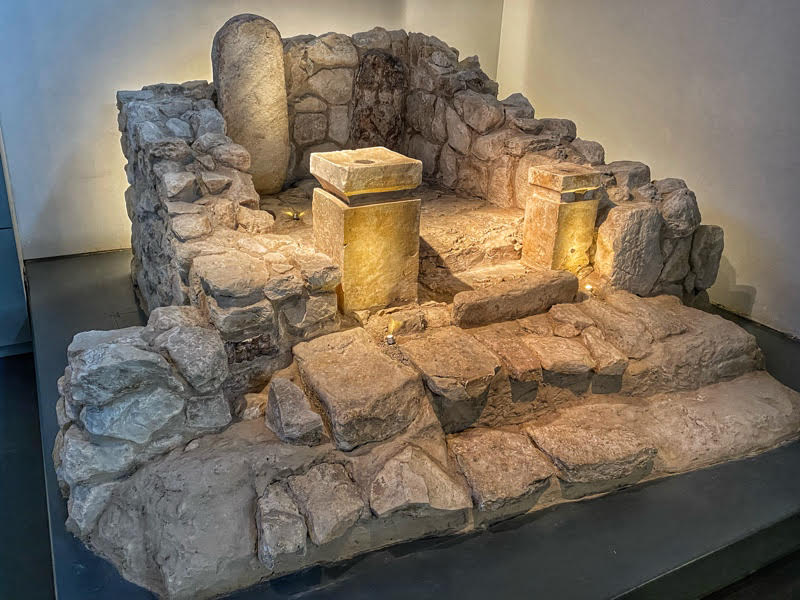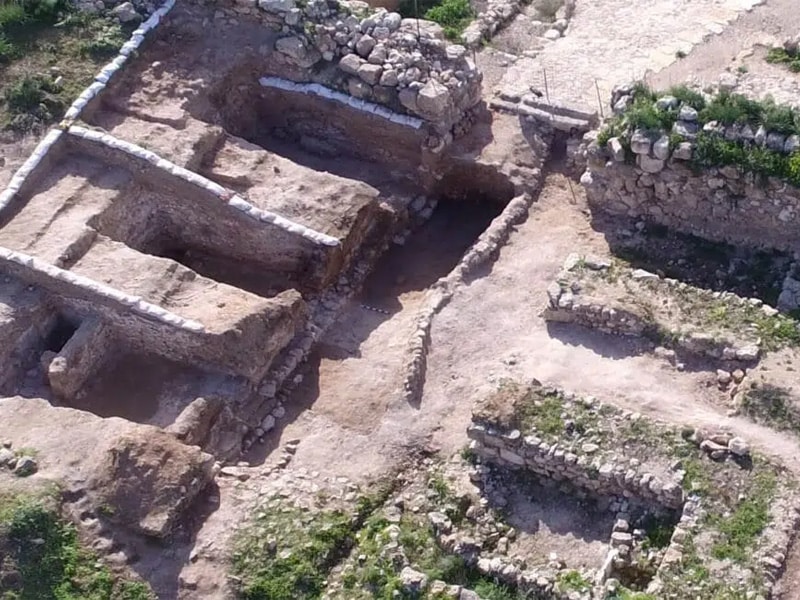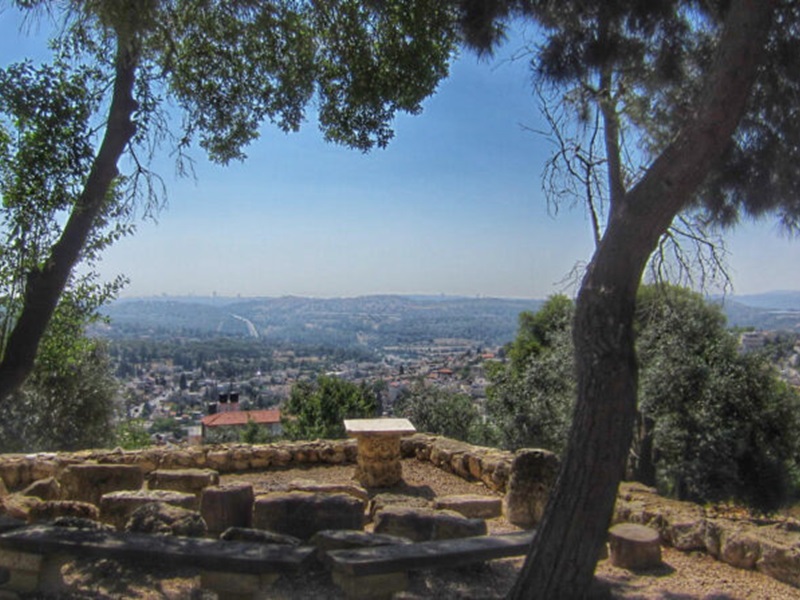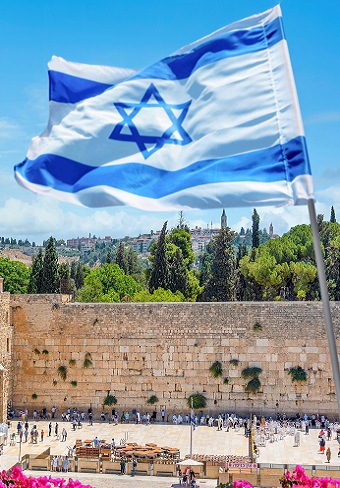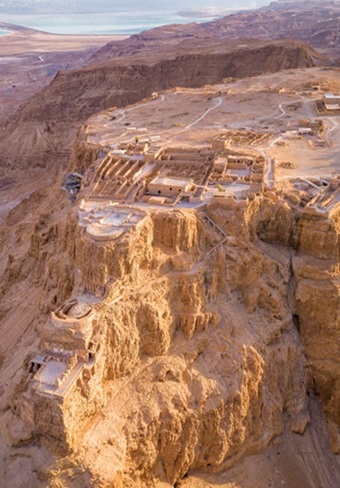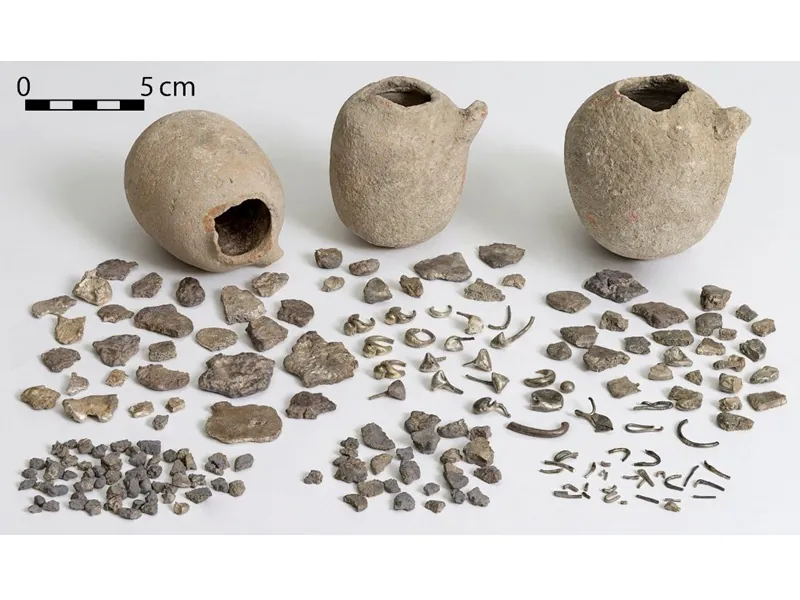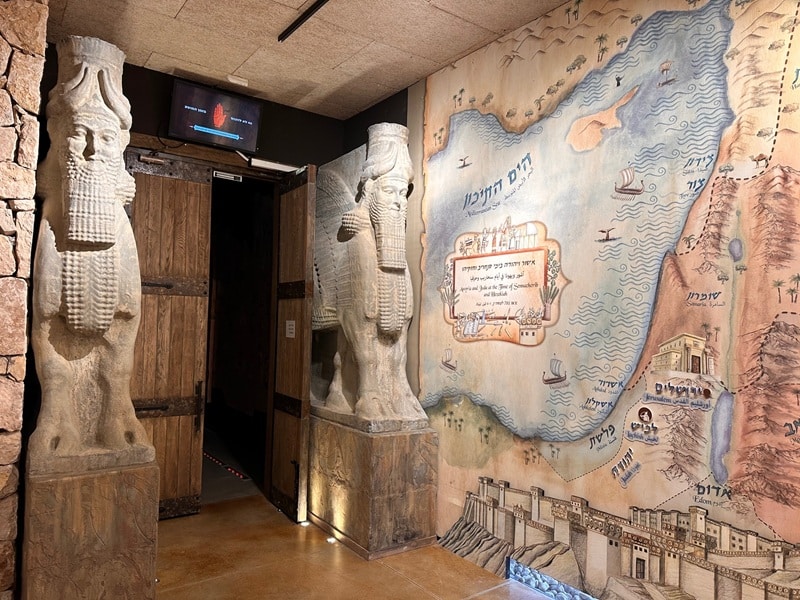Mount Gerizim’s Samaritan Temple

Mount Gerizim is located above ancient Shechem (Nablus) in the middle of the Samaria mountains. Blessed during the period of the Israelite Settlement (Deut. 11:29), it was the place where Moses ordered the tribes to gather to chant blessings (Deut. 27: 1 1-26).
In the days of Ezra and Nehemiah Mount Gerizim was sanctified by the Samaritans who built a temple on the summit and lived around it, yet it was destroyed by John Hyrkanus at the end of the second century BCE.
Josephus states that the Samaritan temple on Mt. Gerizim was built “after the model of the sanctuary in Jerusalem”. The temple in Jerusalem was built at first by Solomon, but the one imitated by the Samaritans was probably the one re-built by Nehemiah in the 5th century BCE. That temple Jerusalem was renovated by Herod the Great at the end of the first century BCE and later it was destroyed by the Romans, in 70 CE.
Today the Temple Mount is controlled by the Muslim Waqf, and no archaeological excavations are done at the site. So, by digging in Mt. Gerizim, one could find an echo of the temple in Jerusalem some 2200 years ago.
But on Mount Gerizim there are also obstacles that excavators face. During the Byzantine period the whole summit was modified into a church and a monastery named after Mary Theotokos (“the carrier of God”). Procopius and other Byzantine sources state that the church complex was built by Zenon in 484 CE and caused the Samaritans to riot. In addition, the summit is holy to the Samaritans. Like their ancestors they live around the mount top, and observe their religious ceremonies, such as the festival of Tabernacles and Passover sacrifices, as ordered in the Bible, in and around the Byzantine complex.
Excavating Mount Gerizim
Mount Gerizim was first surveyed in the 19th century CE and was partly excavated in the 1930s.
Since 1985 the surroundings of the Byzantine complex and parts underneath it were excavated, mostly thanks to the special understanding that Dr. Y Magen. Staff officer of Archaeology of the Civil Administration in Judea and Samaria, has with the local Samaritan community.
His excavations provided a detailed understanding of the whole site. Most importantly, following the last excavation season we are now able to reconstruct the size and shape of the enclosure of the Samaritan temple.
Amazingly, the number of gates, their location, and their shape accurately match the descriptions of the enclosure of the Temple in Jerusalem as described by numerous Biblical and classical texts.
Analysis of the finds supports Josephus’ account of the construction of the temple by Sanballat in the late Persian period. Coins and pottery shards found under the temenos walls show that the temple was already built in the Persian Period (5th century BCE)
In the southern part of the temenos excavators found layers of ash mixed with animal bones. Most of the bones were of goats and sheep, while some were of oxen and pigeons. Surely, they derive from the daily sacrificial activity in the Samaritan temple. Over 300 inscriptions in the four spoken languages at that time were found around the site. Most are dedications by Samaritans. Over 11,000 coins found during the excavations indicate the wealth of the ancient Samaritan community.
Magen’s expedition also uncovered part of the monumental staircase that connected the site with the city of Shechem, and many parts of a Samaritan village next to the temple complex.
